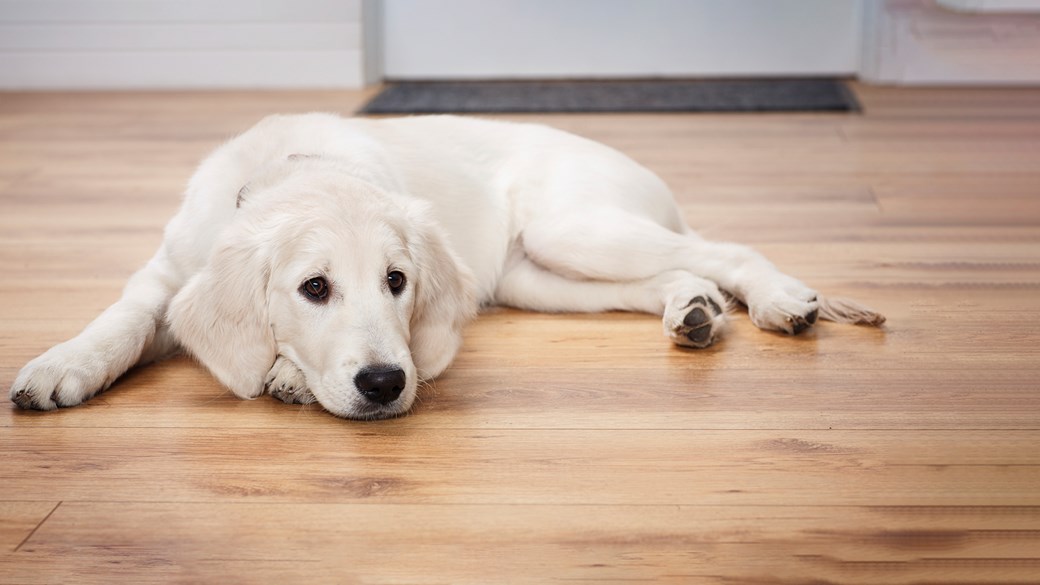
Separation Anxiety
Dogs are not naturals at being left alone, and can struggle if they are not taught to cope with some short periods by themselves.
Dogs are social animals, and love to spend time in company. Over the thousands of years of domestication the bond between dogs and humans has grown ever stronger, and this has meant that we are now seen as their family. While the tight bond between owners and dogs is remarkable, it can come with problems – dogs are not naturals at being left alone, and can struggle if they are not taught to cope with some short periods by themselves.
More about separation anxiety
When you commit to getting a dog, it is important to consider if you have the time they need to dedicate to them. As dogs are so sociable, periods alone can be difficult for them, and they require regular company. That doesn’t mean you can never leave your dog’s side however – in fact, teaching your dog to cope with short periods away from you is healthy and recommended.
Every dog is different, and this means that they can cope with different amounts of time left alone depending on training and personality. It is generally accepted though that a single dog should not be routinely left alone for more than four hours at a time, and that puppies during training should not be left for more than two hours at a time. If you aren’t sure, speak to your vet about your individual circumstances.
Separation anxiety is a stress reaction in dogs to being left alone. Separation anxiety can range from being mild to incredibly severe, with badly affected dogs becoming incredibly distressed and even destructive.
Signs of separation anxiety can be difficult to spot, as they occur mainly while you are out. These include:
- High heart and breathing rate.
- Panting.
- Excessive salivation.
- Increased activity.
- Barking, whining or howling.
- Sitting in windows.
- Searching for a way out.
Some signs you may be able to see that can indicate your dog has been stressed or has separation anxiety include:
- Indoor toileting accidents.
- Scratches on the inside of doors.
- Damaged carpets or floors from digging behaviour.
- Chewed doorframes.
- Chewed items of your belongings dogs will do this as it smells of you and is comforting.
- Very excitable behaviour on your return.
- Anxiety behaviour as you prepare to leave the house. This can include being very restless, and panting more heavily.
There are many reasons why a puppy or dog can suffer from separation anxiety. There can include:
- Your puppy has never been trained to accept being alone.
- Your puppy or dog is scared or nervous of something in the house, or something that occurred while they were in the house, such as thunder or the doorbell. Being alone, just like us, heightens feelings of worry.
- Their previous companion passed away, so they aren't used to being truly alone.
- Boredom, especially for younger dogs can be a real problem.
- Stress. New dogs, especially those who have been through several homes, can struggle with being left alone.
Teaching your dog or puppy that being alone for short periods is normal and that you will return is really important, even if you don’t plan on regularly leaving your dog unattended. Teaching your dog that your absence gives them time to rest and relax means that when you do leave them, they will be able to cope and even enjoy a little alone time.
Start by identifying where you will put your dog when you are out – is it just within a single room or area? This should be a space that they routinely use anyway, to avoid them associating this place with being alone.
You now want to make the space you have chosen as cosy and welcoming as possible. Your dog needs:
- A comfortable place to sleep (their crate, if they have one).
- Fresh water.
- Toys, dog-safe chew toys can help reduce anxiety.
Other additional helpful items can include pheromone diffusers, and leaving a ‘talking’ radio station on. Closing them into the area using a baby gate instead of a full door can also help them feel less enclosed, especially during training. It’s now time to teach your dog that being left in this area isn’t a cause for anxiety, which should always be done via
